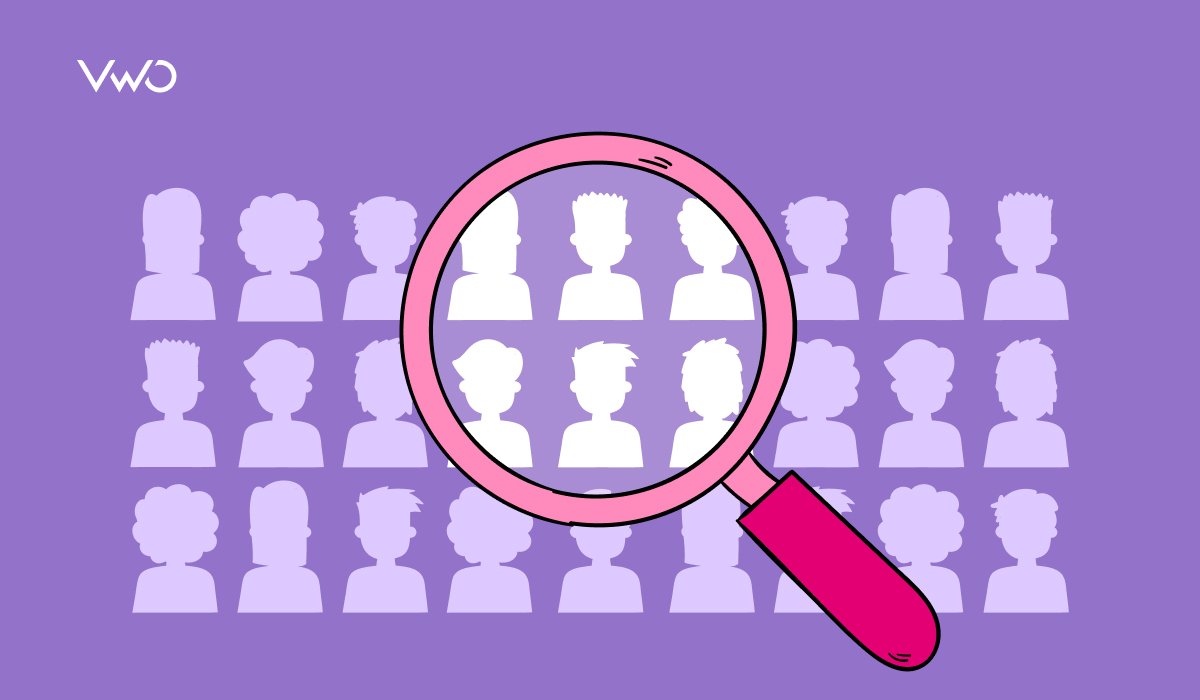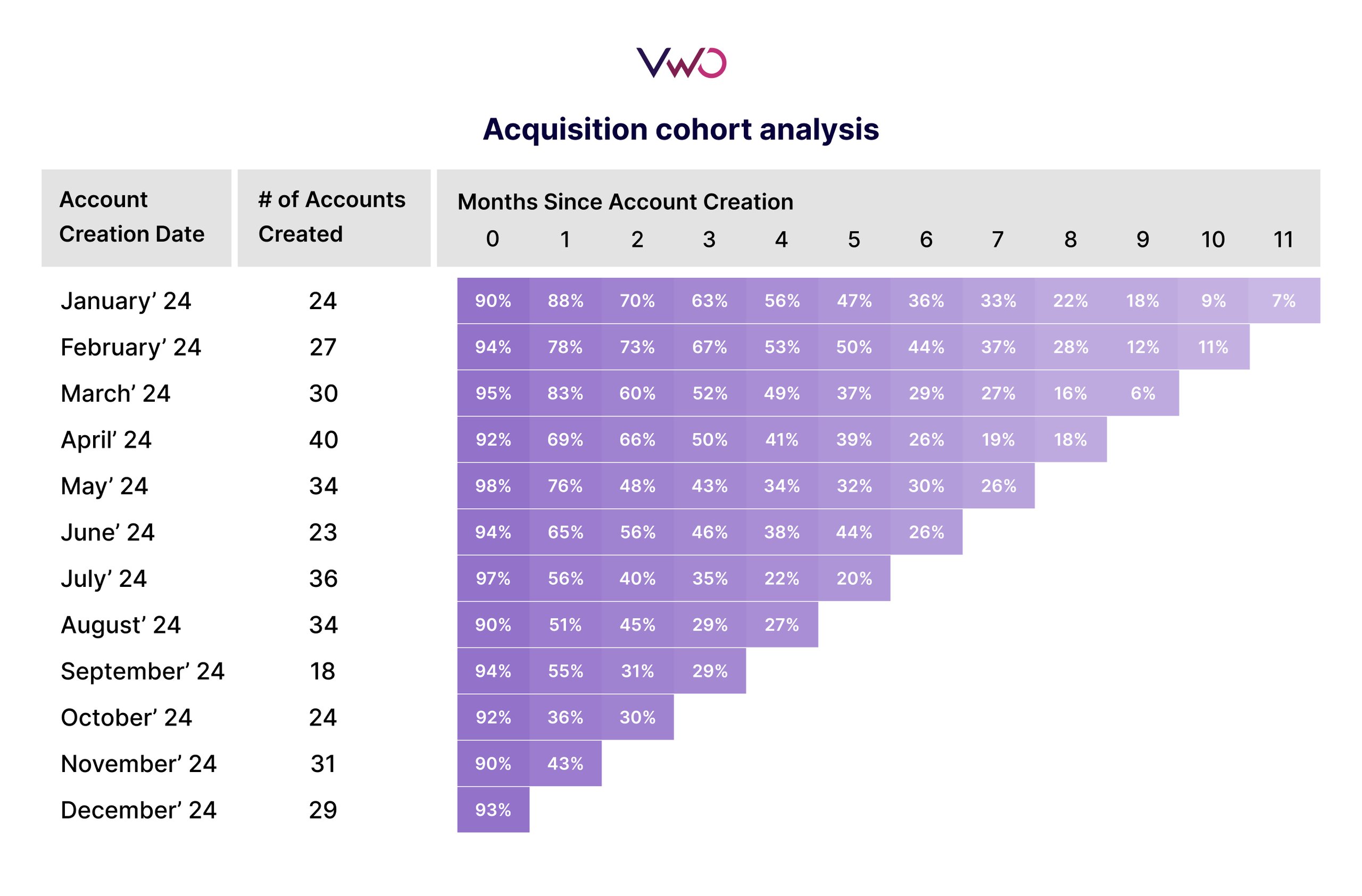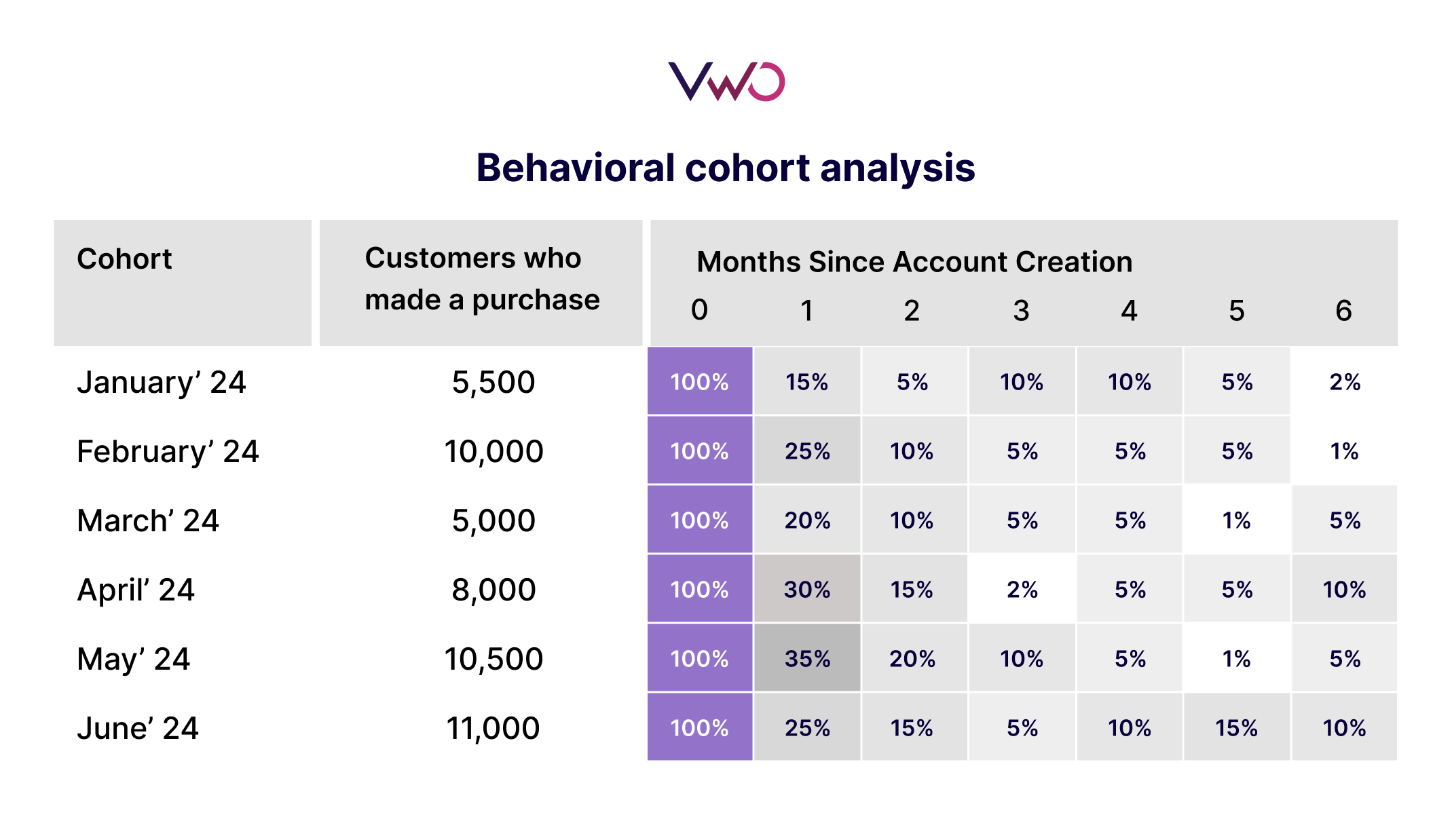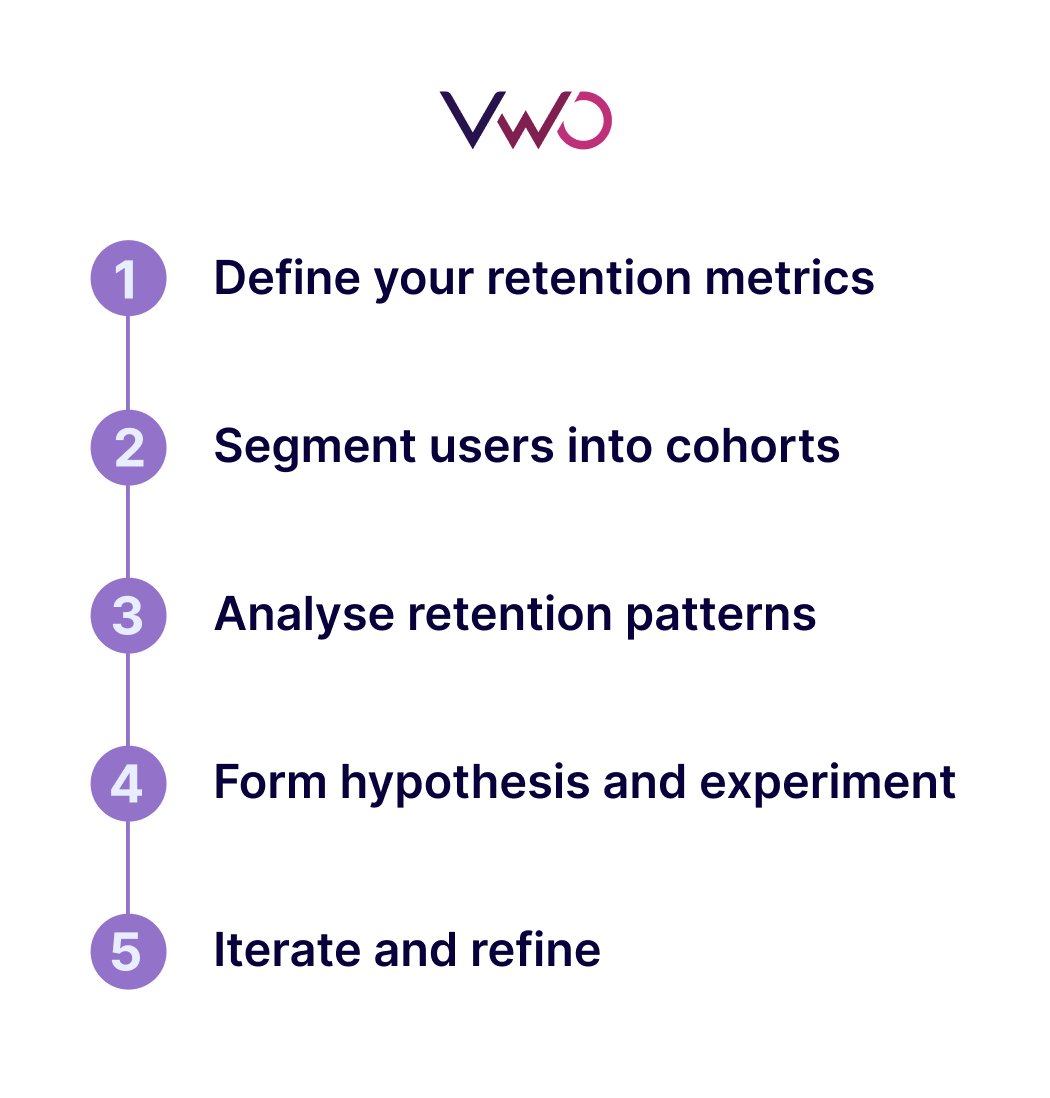Retention is a puzzle every product manager faces.
Whether you’re in e-commerce, finance, gaming, or food delivery, the struggle to keep users coming back is universal.
One weapon that consistently helps product teams solve this puzzle is cohort analysis. It’s like having a magnifying glass for user behavior—you can zoom in on specific groups and see how they interact with your app over time.
In this article, we’ll explain cohort analysis, why it matters, and how to use it to improve user retention.

What is cohort analysis?
Cohort analysis focuses on grouping users based on shared characteristics or actions and analyzing their behavior over time. This means understanding how different user groups engage with your mobile app.
There are two main types of cohorts you’ll work with:
Acquisition cohort analysis
The acquisition cohort report is about grouping your app users based on their first joining.
Think of it like sorting them by their “welcome date.” For example, you could group everyone who installed your app in January into one cohort, February users into another, and so on.
This helps you track how each group behaves over time. Are the January users still active after a week? What about a month or a year?
For instance, let’s say users from a February marketing campaign stick around longer than those who joined organically. That’s a big clue to investing more in campaigns like the one in February!

Behavioral cohort analysis
Behavioral cohort analysis, on the other hand, is about grouping users based on what they do in your app. It’s like saying, “Show me all the users who finished onboarding,” or “Group everyone who made their first purchase.”
This kind of analysis helps you see how specific actions affect user engagement and retention.
For example, a gaming app creates cohort data based on the level users reach in their first session. This helps the app understand how long users stay engaged before dropping off and what it could tweak to keep them playing.
Consider another example below; here, you need to study the purchase behavior of different customers who created accounts at different times of the year.

Why is cohort analysis important to improve retention?
You are launching a new feature, and your overall retention rate drops.
Without cohort analysis, you’re left guessing:
Did the feature cause the drop?
Was it a specific user segment?
Cohort analysis clarifies those questions.
Here’s why it matters:
- Personalized retention strategies: Different user groups behave differently. Cohort analysis lets you craft strategies tailored to their needs.
- Identifying churn triggers: You can pinpoint users who are at risk of churning. This information can be used to target re-engagement campaigns and incentivize users to return to the app.
- Measuring impact: Whether it’s a new feature, campaign, or app update, you can see how it affects retention for specific groups.
How to use cohort analysis to optimize retention

1. Define your retention metrics
Before diving into cohort analysis, determine what “retention” means for your app. While retention is measured around a period, the activity of the user that makes him an “active user” could mean different things for different kinds of apps.
For e-commerce, the retention metric could be defined as users making a repeat purchase in the first 30 days after installation, while the same could be 7 days for a food delivery app.
In the case of a stock trading app, it could be logging in at least once daily.
Here is the formula for the retention rate:
Retention rate = (Users at the end of the period / Users at the start of the period) × 100.
In simple terms, this formula tells you the percentage of users who stick around.
“Users at the start of the period” means those who installed your app and were active when the clock started.
“Users at the end of the period” still engage with your app when the clock stops.
What counts as ‘active’ is up to you—it depends on how you define engagement based on your business goals.
2. Segment users into cohorts
Cohorts are the foundation of your analysis. Once you know what retention means to you, start by grouping users based on the following:
- When they signed up (e.g., acquisition date)
- Actions they performed (e.g., completing onboarding or making a purchase)
For example, in an e-commerce app, you might create a cohort of users who made their first purchase during a holiday sale. This cohort’s retention will help you compare it to other cohorts.
3. Analyze retention patterns
Once you’ve grouped users, look for patterns. Are certain cohorts sticking around longer? Are others dropping off quickly?
While managing a gaming app, a team noticed a sharp retention drop for users who reached Level 3. It turned out that Level 3 was unusually difficult, frustrating new players.
They adjusted the level, and retention for that cohort improved by 15% within a month.
4. Form hypotheses and experiment
Cohort analysis is only as useful as the actions you take. Identify what might be causing churn or retention spikes and test changes.
For example:
- Hypothesis: Users who don’t complete onboarding within 24 hours are likelier to churn.
- Experiment: Add a progress bar to onboarding and test its impact on retention.
5. Iterate and refine
Once you’ve run your experiments, review the results. Did retention improve for the cohort you targeted? If not, dig deeper and try a new approach.
Cohort analysis examples across industries
E-commerce
In e-commerce apps, cohort analysis can reveal user behavior patterns tied to specific actions or timeframes.
For example, you can track users who made their first purchase during a holiday sale and compare their retention and repeat purchase rates with users who shopped outside the sale period.
Similarly, you might analyze cohorts based on payment methods, such as users paying via credit card versus digital wallets, to see which group is more likely to return.
If your app offers personalized recommendations, you can track cohorts of users who interacted with these recommendations versus those who didn’t, helping you optimize your suggestion engine.
Finance
Finance apps often use cohort analysis to evaluate user engagement with key features.
For instance, you can compare the retention of users who completed their KYC process versus those who haven’t, highlighting the importance of seamless onboarding.
Another use case is grouping users based on their first interaction, such as investing in a mutual fund versus opening a savings account, and then analyzing how these groups engage with other services.
If your app sends spending insights, you can analyze cohorts of users who viewed these insights regularly versus those who ignored them to determine the feature’s impact on user retention.
Food & Drink
Food delivery apps can use cohort analysis to understand operational efficiency and user satisfaction.
For example, you might group users based on their first order’s delivery time and check whether late deliveries lead to lower reorder rates.
Additionally, you can analyze users who frequently reorder from specific cuisines or restaurants, helping you prioritize partnerships.
If your app offers subscription-based discounts or meal plans, compare cohorts of subscribers versus non-subscribers to evaluate the long-term impact on revenue and loyalty.
Gaming
Gaming apps rely heavily on cohort analysis to refine gameplay and monetization strategies. For instance, you can track players based on the level they reached in their first week and see if higher initial engagement leads to better retention.
Another example is analyzing cohorts of users who participated in limited-time events or tournaments, which can help you understand how such features impact engagement, retention, and revenue.
You might also group users who made their first in-app purchase within the first month and compare their long-term engagement with non-purchasers to design effective pricing models and incentives.
Health & Fitness
Cohort analysis for health and fitness apps can uncover user motivation and behavior patterns.
For example, you can analyze users who completed their first workout within 24 hours of signing up and compare their engagement with those who delayed starting.
Another use case is grouping users based on their preferred workout type, such as yoga versus strength training, to personalize content and improve retention.
If your app offers challenges, track cohorts of users who participated versus those who didn’t to understand the impact of gamification on long-term commitment.
Best practices for cohort analysis
Here are a few tips to make cohort analysis effective:
- Align with goals: Your cohorts should reflect the metrics that matter most to your business.
- Avoid over-segmentation: Too many cohorts can make it hard to draw actionable insights. Keep it simple.
- Regularly update cohorts: User behavior evolves. Continuously refresh your cohorts to stay relevant.
- Combine with other tools: Heatmaps, session recordings, and surveys complement cohort analysis and provide deeper insights.
Tools to get you started
You don’t need to build this from scratch. Tools like Mixpanel, Amplitude, or Moengage are excellent for cohort analysis for mobile apps.
If you’re looking for something more visual, try Tableau or Power BI.
If you need to see how specific cohorts of users experience your app, you can try conducting surveys, user interviews, or using behavioral insights tools.
Key takeaway
I’ll leave you with a story.
Early in my career, I managed a sports app where retention was a nightmare. Many users downloaded the app, signed up, and never returned.
It wasn’t until we started segmenting users into cohorts that the problem became clear. Through cohort data, we found out that 40% of the users who never returned were also the ones who didn’t complete onboarding in the first session and were using iOS. They were dropping off early.
When we saw the session recordings of this cohort of users, we saw that the app was not moving forward after a step, as the “Next” button was not functional during onboarding. Users rage-tapped on the button, but nothing happened, and they closed the app. Not many bothered to leave a review or contact us. (That’s where session recording tools came in handy)
Once we fixed this small thing, the retention rates improved.
The lesson?
Start small and be hyper-focussed.
Analyze one or two cohorts, improve, and build on your success.
Cohort analysis isn’t just another analytics tool—it’s a mindset.
It helps you better understand your users and create a product that meets their needs.
So, what are you waiting for? Open your analytics tool, define your first cohort, and get to work!






![7 Top Performance Reporting Software in 2026 [Expertly Curated] + How to Choose the Best](https://static.wingify.com/gcp/uploads/sites/3/2025/04/Feature-image-7-Top-Performance-Reporting-Software-How-to-Choose-the-Best-One.jpg?tr=h-600)
![5 Best Free App Analytics Tools in 2026 to Boost App Performance [Research-Backed Picks]](https://static.wingify.com/gcp/uploads/sites/3/2025/04/Feature-image-5-Top-App-Analytics-Tools_-Solutions-to-Improve-Your-App-Performance.jpg?tr=h-600)











